An expert’s guide to the perfect day trip to Toledo, Spain the enchanting (previous) capital city.
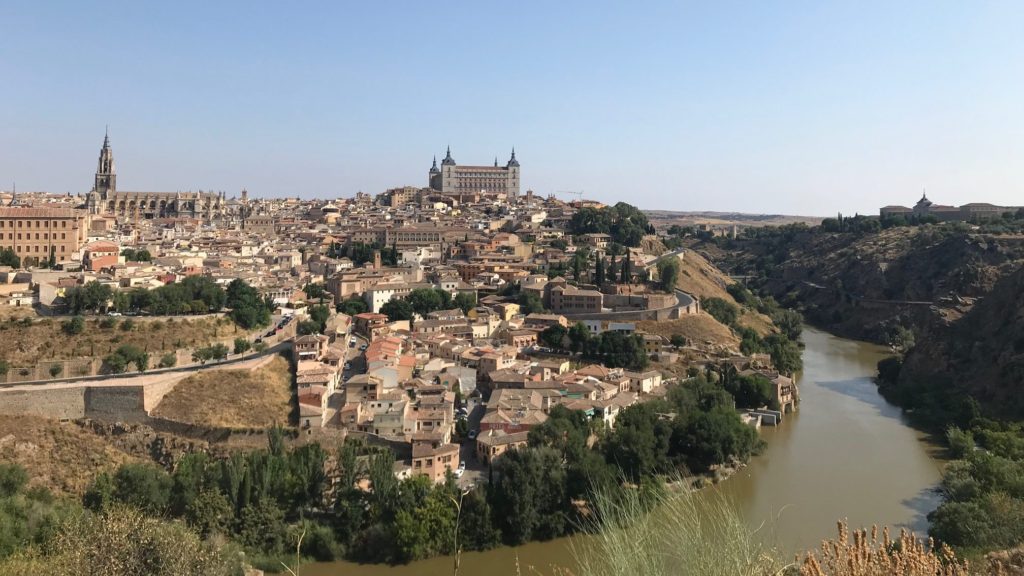
This article may contain affiliate links through the Brevité and Amazon associate’s program. If you purchase an item using one of my links I will receive a small commission, with no extra cost to you.
Toledo is arguably one of the most enchanting cities in Spain. Once known as the capital, this city has numerous layers of complex history and has been an essential crossroads in the empire for centuries. Toledo is referred to as the city of three cultures. This stems from a time where three cultures civilly shared the city. You can clearly see the Moorish, Jewish, and Catholic influences while exploring. Keep an eye on the cobblestone streets where you may find Hebrew symbols and Arabic script!
Is Toledo Worth Visiting?
YES! While living in Madrid, I was lucky enough to visit Toledo four different times and acted as a tour guide to all my visiting family and friends. The following Itinerary combines what I have seen and learned from my four different trips into one perfect day in this magical city. It is a perfect day trip from Madrid and if you are planning on visiting the current capital of Spain, you must take the time to visit the original!
How many days do you need in Toledo?
Toledo is packed full of culture and history. With that being said, you could easily spend weeks here exploring every nook and cranny. However, due to the city’s size, you can pack more than you would expect into one day!
Day Trip to Toledo, Spain

How to get to Toledo.
Option 1: High-Speed Train
High-speed trains are my favorite way to travel.
How much is the Train from Madrid to Toledo?
The trains leave from Atocha Renfe Station in Madrid and cost about 10 euros each way. The ride is only about 30 minutes!
Option 2: Guided Tour
There are several day trip tour options provided by several tour companies in Madrid. These often provide transportation, guides, and a hop on hop-off style once arriving in Toledo.
Option 3: Bus
This is the option I always used. As a resident of Madrid, I had an Abono Joven, so this option was FREE and simple for me. If you have this powerful Abono be sure to show your card to the bus driver. If you do not have an Abono, it only costs 5 Euros each way. You can catch the bus from the Plaza Eliptica bus station.
The bus from Madrid to Toledo takes about 1 hour and 15 minutes and leaves every 30 minutes from platforms 5, 6, and 7. You can purchase your ticket at the platform before getting on the bus. You can also purchase the ticket ahead of time online.
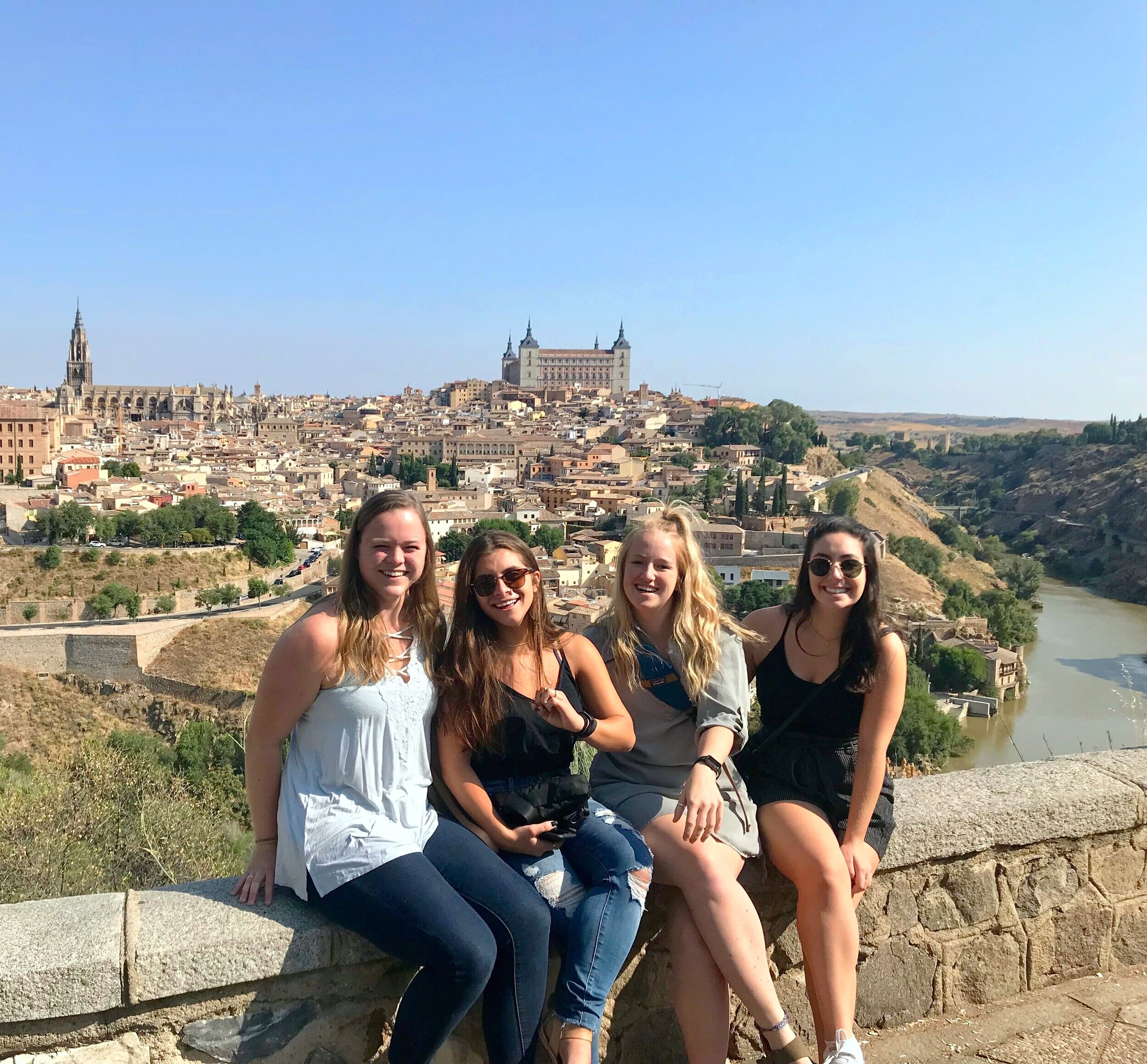
Stop 1: Mirador Del Valle
Mirador Del Valle is the most iconic viewpoint of Toledo and was even painted by famous artist El Greco. This is definitely worth the stop. Though it is on the opposite side of the city from the train station, it’s totally worth the venture. If you are feeling ambitious you can hike up here as well. If you want to see the views without walking uphill in 100-degree heat, I recommend getting a taxi.
Most of the drivers speak little to no English. Here is what I say to the drivers. Dos Paradas (two stops) El Mirador Del Valle y el Puente de San Martin (St. Martin Bridge).
They will drive you to this magnificent viewpoint. You can get out, snap a few model pics, and hop back into the cab. When getting out, don’t forget to ask the taxi driver to wait.
(Espera por favor!) That way he won’t leave you at the top of the hill, stranded, and waiting for someone else to come by! Once you get back in the taxi he will then take you to El Puente de San Martin, which is my favorite entry point to the city. This ride usually costs about 15 euros.
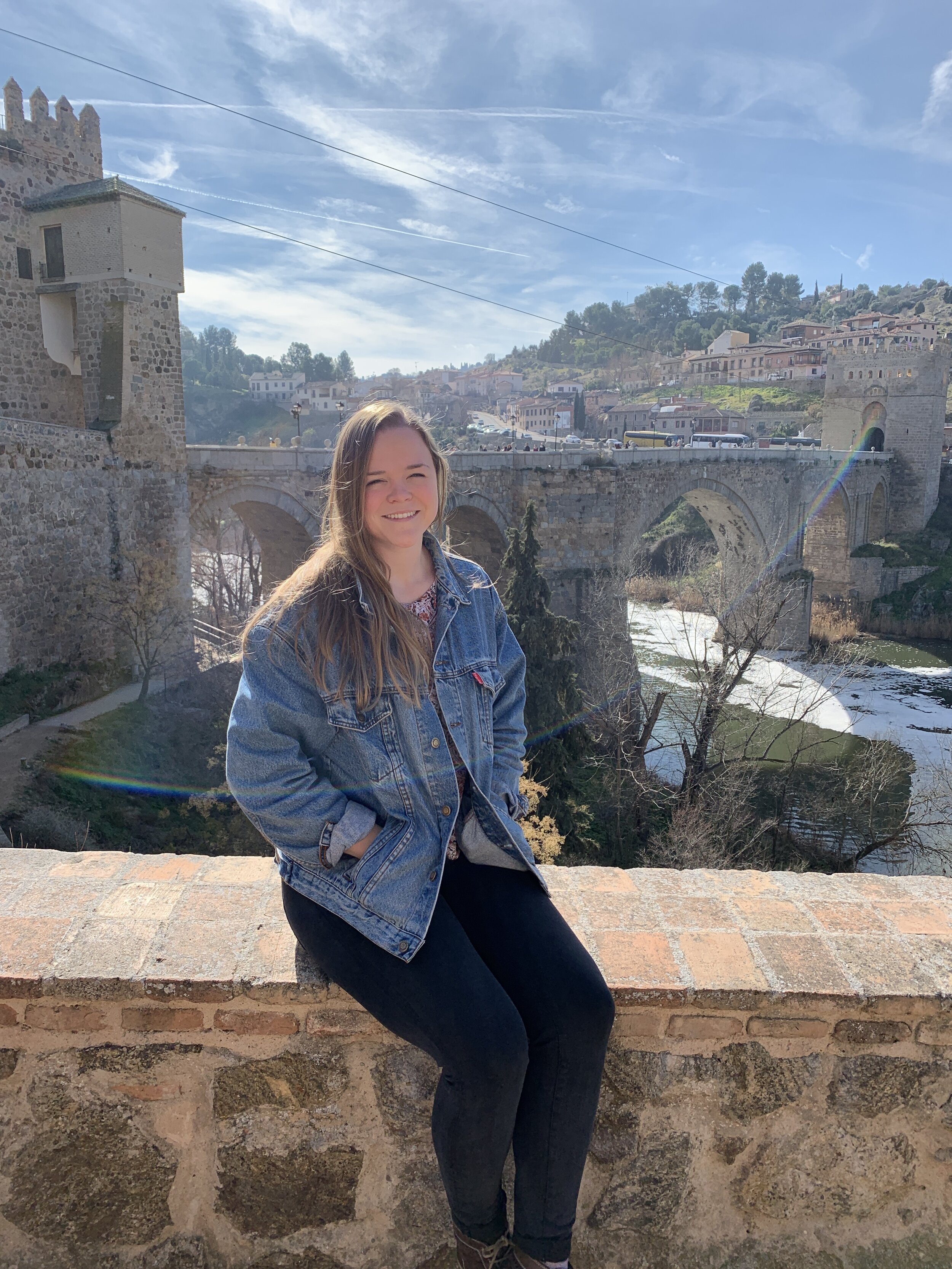
Stop 2: Puente de San Martin
The St. Martin’s Bridge was built over the Tagus River in the 14th century. The largest arch in the middle spanned over 40 meters (about 130 feet). This was a huge architectural feat of the time.
The story surrounding this bridge fascinates me. On the night before the bridge’s original inauguration, the architect, Archbishop Pedro Tenorio, was looking over his calculations and discovered a massive error. He realized that the bridge would collapse when the support structures were removed. Knowing of the impending failure and social disgrace, he confided in his wife. After hearing his confession, his wife snuck out in the dead of night and set fire to the bridge, simultaneously reducing it to ashes and preserving their family’s social standing. The fire was deemed an accident and the Archbishop was gifted a second chance. This time his calculations were correct and the bridge clearly stands today. However, in an effort to honor his wife’s bravery, he adorned the Bridge’s center arch with a statue of her.
At the end of the bridge nearest to the old city, there is a Zipline that takes you soaring across the river. This could be a fun way to get a unique viewpoint of the Puente de San Martin.

Stop 3: Monasterio de San Juan de los Reyes
From the Puente de San Martin walk up the hill on Bajada San Martin. When it dead ends, turn right on Calle de los Reyes Católicos and continue uphill. The road will take you directly to the front doors of the Monasterio de San Juan de los Reyes. This incredible 15th-century Monastery was commissioned by Spain’s most famous Monarchs; King Ferdinand and Isabella, and is now ran by Franciscan Monks. The architecture is incredible and the cloisters are some of the most beautiful in the world.
You can tour the Monastery for only 3 euros and admire the religious artifacts, architecture, and serenity of the cloisters.
There is also an option to purchase a bracelet for 10 euros that allows entry into many historical sights across the city.
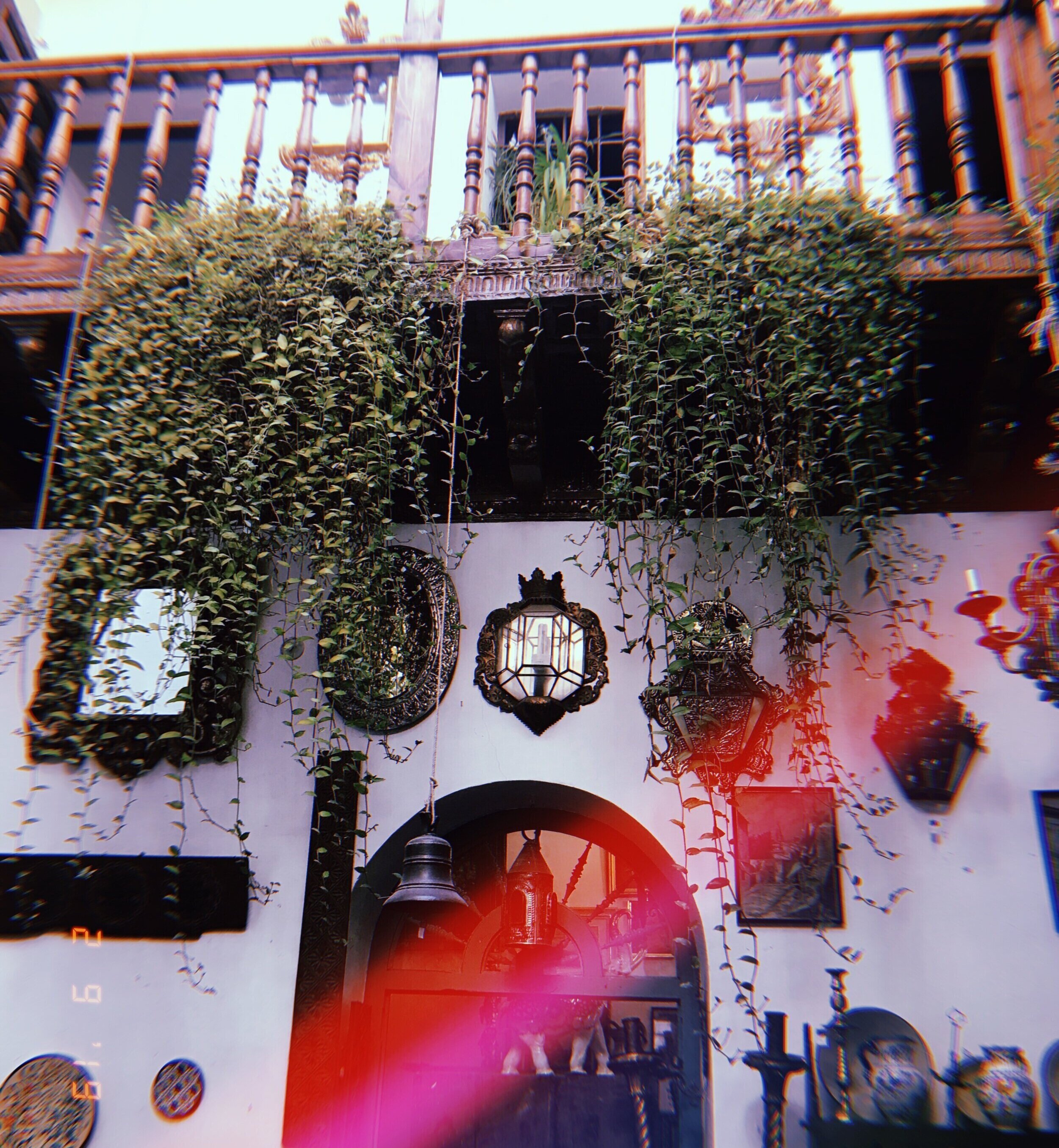
Stop 4: Antigüedades Linares
Continue along Calle de los Reyes Católicos, where you will find several small cafés and restaurants to stop for a café con leche and croissants. Several have nice patio areas that overlook the Monastery. Along this street, there are many antique shops that sell authentic swords and daggers crafted with Toledo Steel. You can find some beautiful hand-crafted Damascene Gold and Silver jewelry. In some stores you can even meet the artist who creates the pieces.
One of the cutest of these shops is Antigüedades Linares. It has an adorable courtyard and artifacts hidden in all corners of the store.
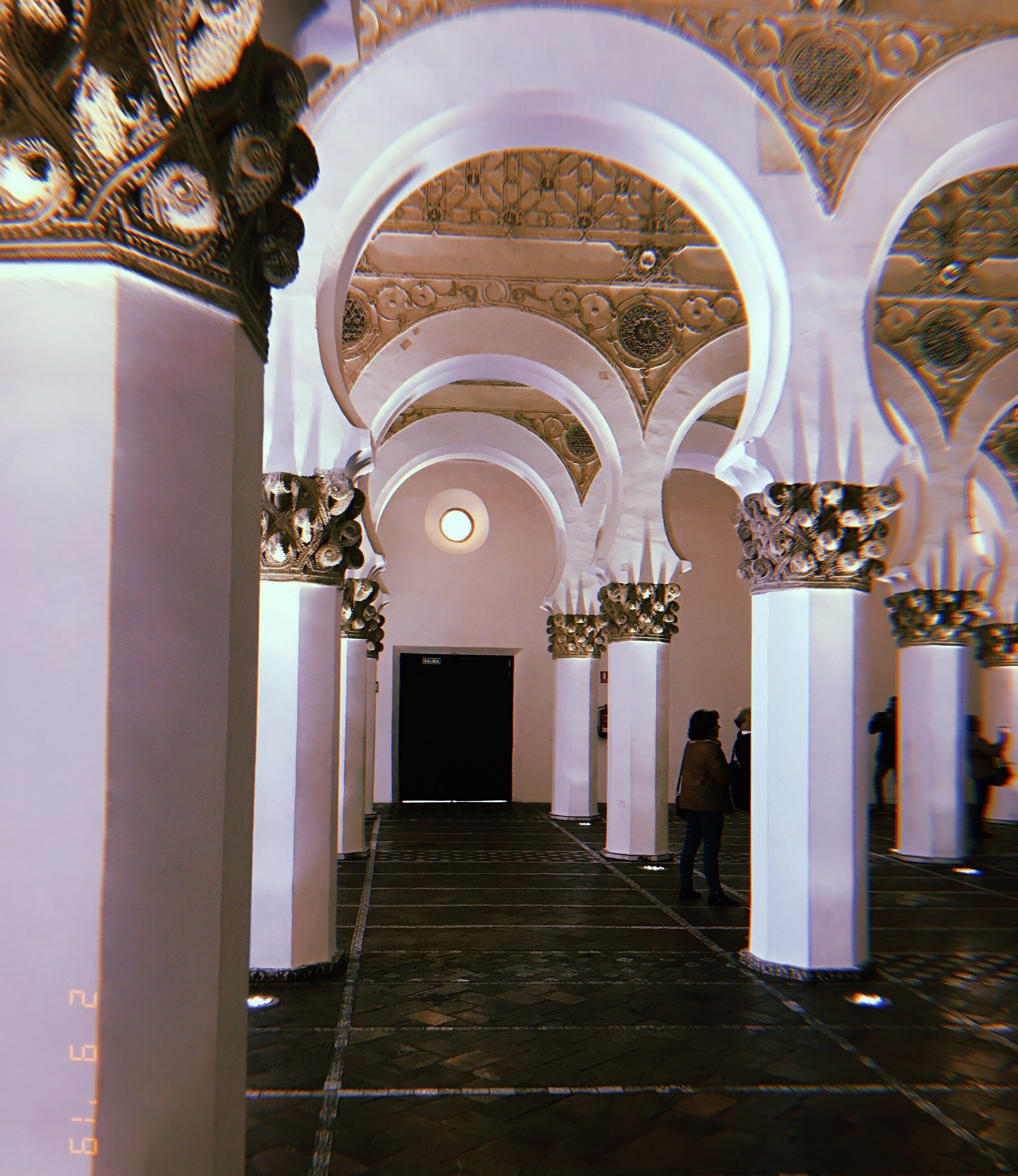
Stop 5: Sinagoga de Santa María La Blanca
Follow Calle de los Reyes Católicos and soon you will find Sinagoga de Santa María La Blanca on the left hand side.
Entry to this 12th-century Moorish-style synagogue costs only 3 euros or is included in the wristband.
The exquisite white horseshoe arches create a sacred place that feels quite serene. It is an architectural marvel and its Moorish influence is quite different than the abundance of churches that overwhelm Spain. Like many of the original Jewish or Moorish religious sites in Spain, it was overtaken by the Catholics in the 15th Century and converted to a church. It is a quick but unique stop while in the city of three cultures.
There are several other Synagogues throughout the city that are open to the public, however, I find this to be the most impressive.
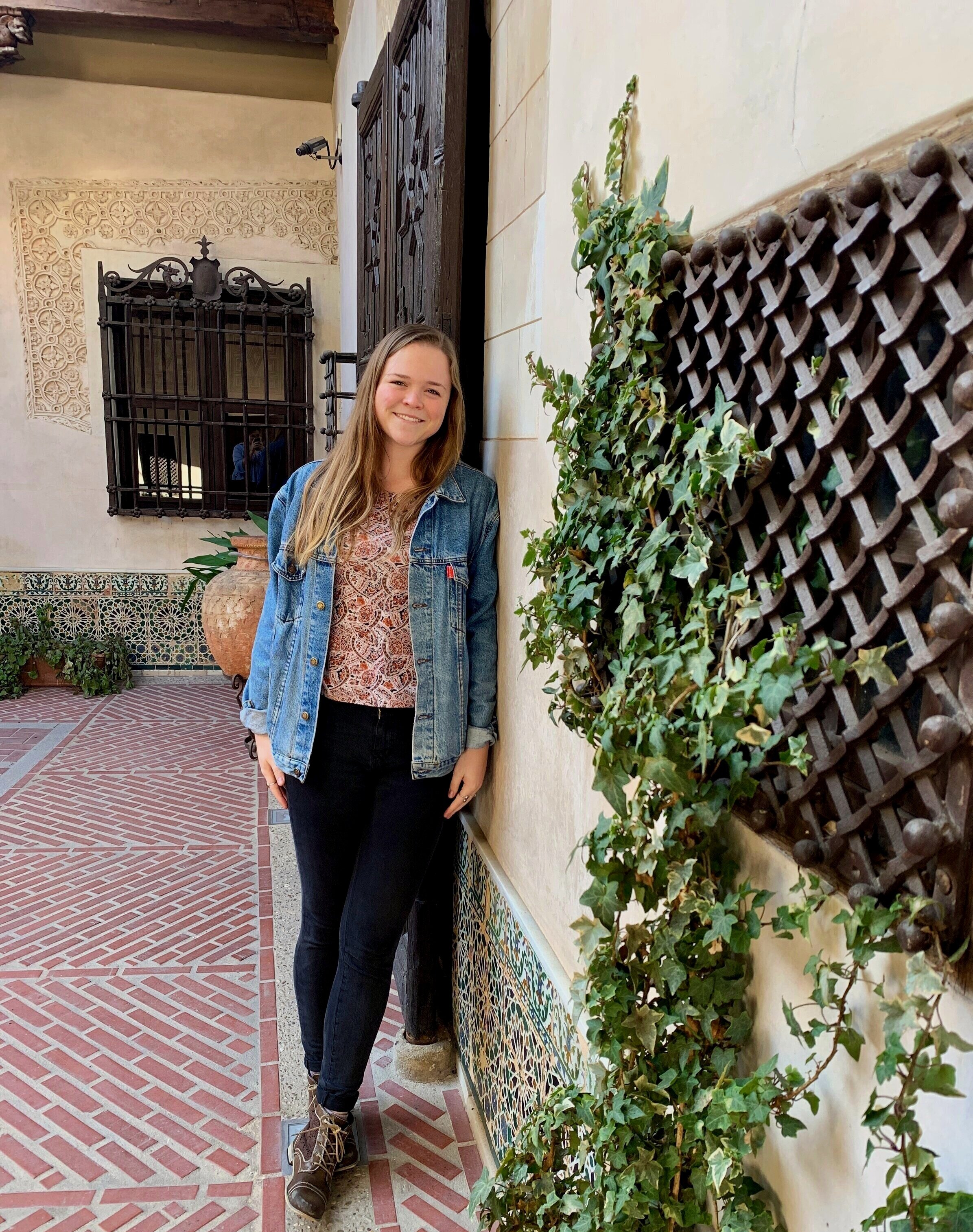
Stop 6: Museo del Greco
Return to Calle de los Reyes Católicos and follow it around the bend. This will take you to some spectacular views of the surrounding hills on the right and to Museo Del Greco on the left.
I am not a huge art museum fan, but I truly love this particular museum. The entry fee is 3 euros and is FREE on Sundays!
The Museum is located in a 16th century home that recreates that of the artist El Greco, who spent much of his life in Toledo. He lived, painted, and drew a great deal of inspiration from this magical city. My favorite part about this museum is touring the house and the courtyard which featured intricate Spanish tile.
El Greco’s work is also incredible to see in person. His dramatic works of religious figures are world-renowned, and for me, it was amazing to see his work in the setting in which it was created.

Stop 7: Cervecería Lúpulo
Exit Museo del Greco from the back onto Paseo Tránsito, walk north into the winding, narrow streets. As the street narrows the street name turns into Travesía del Conde. This street will dead end into Calle de Santo Tomé. At this corner is, Artesanía española del Cuero J. PINEL. This is a great place to pick up your authentic Toledo leather souvenirs!
Cross over Calle de Santo Tomé and continue onto the small street of Calle Campana. Calle Campana will shortly dead-end into Calle Aljibillo at this intersection is where you can find the Cervecería Lúpulo. A bar that serves craft beer and not just Mahou is a rare find. The locally crafted beers at Cervecería Lúpulo are tasty and their food is excellent. They have their own twist on classic Spanish dishes. Their huevos rotos really blew me away!

Stop 8: Santa Iglesia Catedral Primada de Toledo
Now you are now headed toward the masterpiece of Toledo: Santa Iglesia Catedral Primada de Toledo. To navigate here, turn left out of Cervecería Lúpulo onto Calle de Alfonso XII. Take this street for a few blocks past several cute shops. You will then turn right on the tiny street, Callejón de Jesús y María. When this street dead ends, turn left onto Calle Trinidad. Follow this street until you reach the looming Catedral.
The entrance to the Cathedral is 10 Euros but includes an audio guide. The exterior of this cathedral is breathtaking and the interior is somehow even better. It is definitely worth the visit.
The audio guide is quite extensive and can take you several hours to complete. To see all the incredible details of the naives, alters, and additional chambers is quite time-consuming. I found it very interesting to learn about the symbolism and significance of much of the intricate art pieces that adorn every inch of the space.
My absolute favorite part of the Cathedral is the cloisters. If you walk all the way around to the back of them, you are rewarded with this incredible view of the bell tower. I found this to be a great place to relax and listen to some of the audio guides.
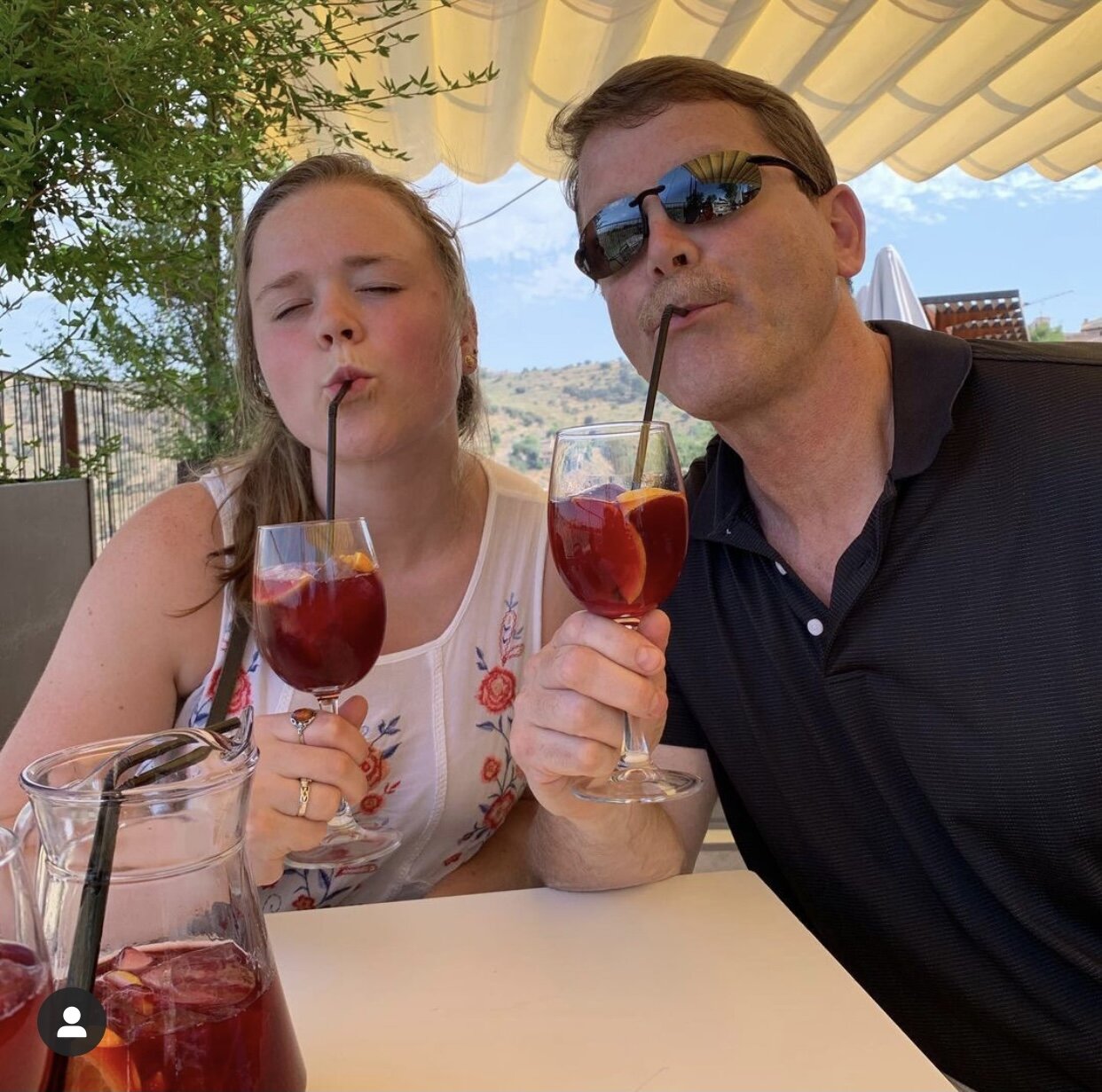
Stop 9: Terraza Restaurante Bu
From the South East corner of the Cathedral, walk away from the Cathedral along Calle de Sixto Ramón Parro. When you reach Plaza San Justo, follow Cuesta San Justo until it dead-ends into Calle Corralillo San Miguel. This will take you directly to Terraza Restaurante Bu. A beautiful outdoor patio with one of the most magnificent views of Toledo and the River Tagus below. Escape the hot Spanish sun for a beat and cool off beneath the canopy and water misters. This is a perfect place to enjoy the views of Toledo and a pitcher of Sangria.
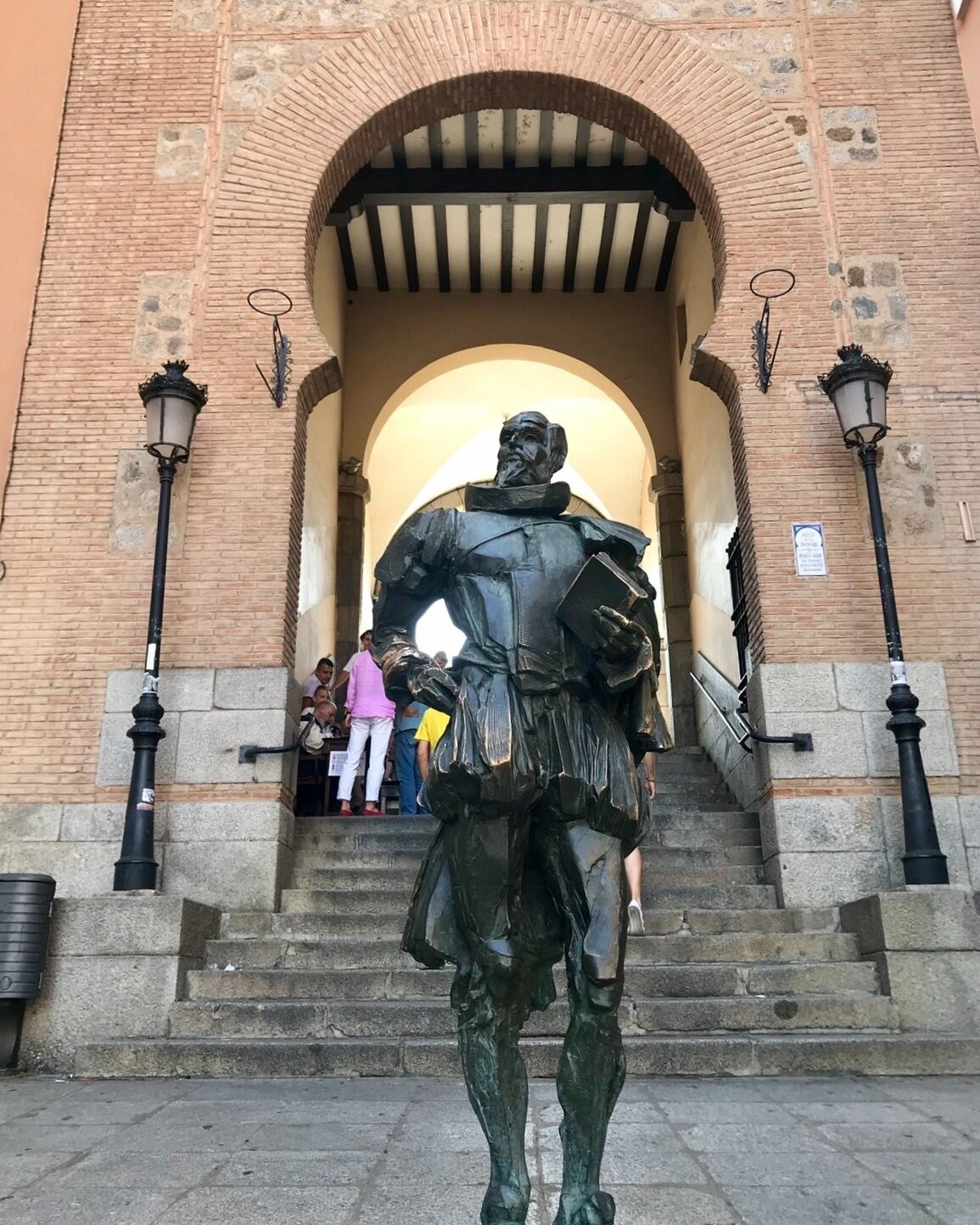
Stop 10: Statue of Miguel Cervantes
From Terraza Restaurante Bu walk North on Calle de la Union, then take your first left on Calle de la Paz. At the first fork, take a slight left onto Plaza Santiago de Caballeros. This small street will take you directly to the statue of Famous Author, Miguel Cervantes. Next to the creator of Don Quixote, is another Museum that holds more work from El Greco. Near the statue, you can find one of the cutest ice cream and sweets shops. Jacinta y Maria. Here you can not only buy ice cream but also you can find some authentic Marzipan that is famous in Toledo. The owners were extremely sweet, and I would highly recommend you make a stop and satisfy your sweet tooth.
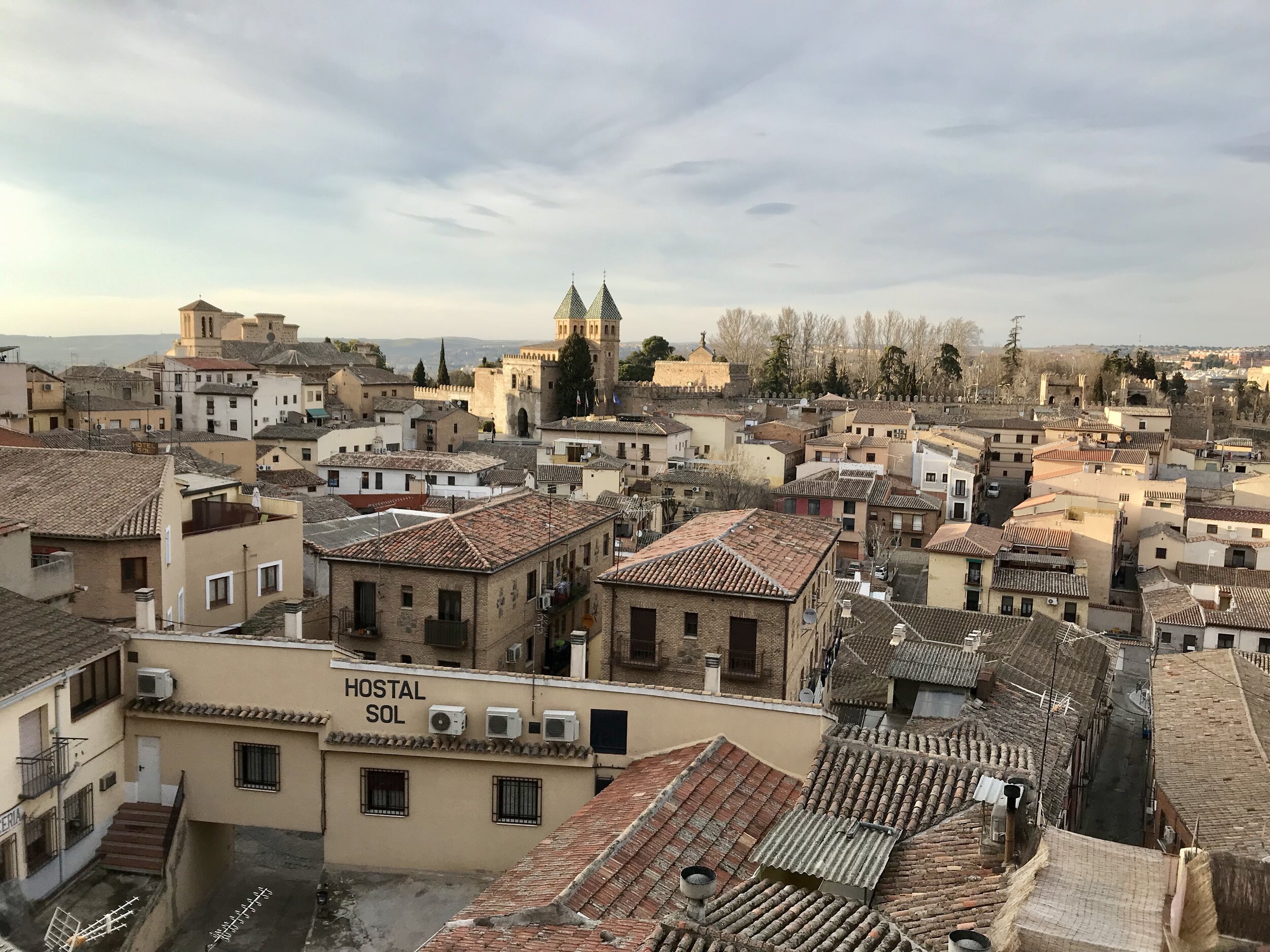
Stop 11: Walls of Toledo
From this point, you can either head through the arch behind Cervantes or walk in the direction that Cervantes is facing. Either option will send you to breath-taking views. When you head in the direction of the arch, you will be shocked by the main gates of the city. If you choose to take the route towards the face of Cervantes, you will be amazed by fortifying walls of Toledo. Keep an eye out for small paths and staircases. These can lead you to the top of the wall. I found it extremely exciting to walk on the ancient walls.
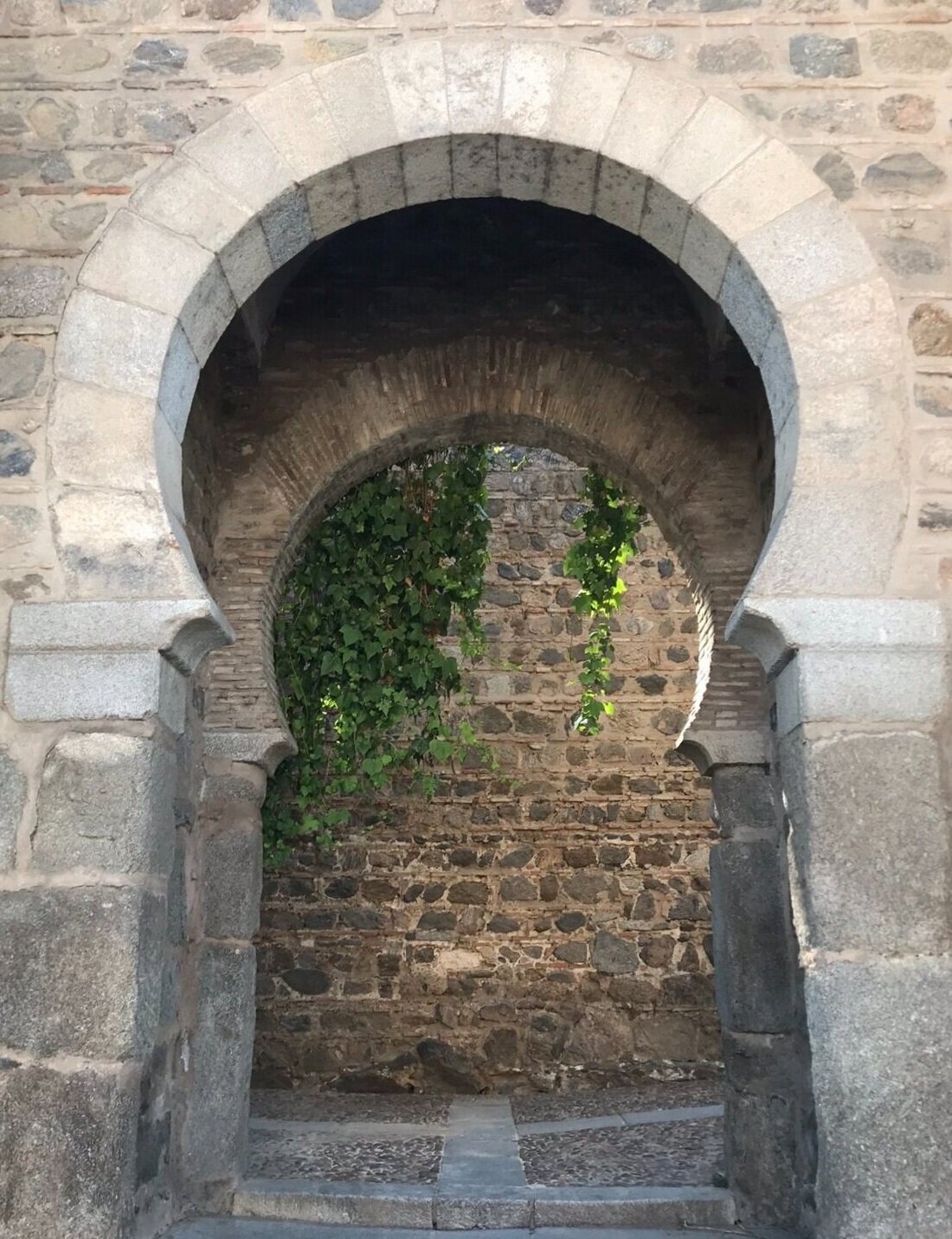
Stop 12: Puente de Alcántara
Eventually, Bajada Alcántara will take you to the bottom of the historic walls and out of the Puerta de Alcántara. Once you exit the Puerta, you will be able to cross the street and admire the historical bridge of Puente de Alcántara. This bridge crosses the Tagus river and was originally constructed by the Romans in the 10th century. Over time, the bridge was heavily damaged during the battles of the Reconquista, and eventually was reconstructed to the magnificent structure that stands today. The Puente is interesting in itself, but also offers a unique perspective of the city.
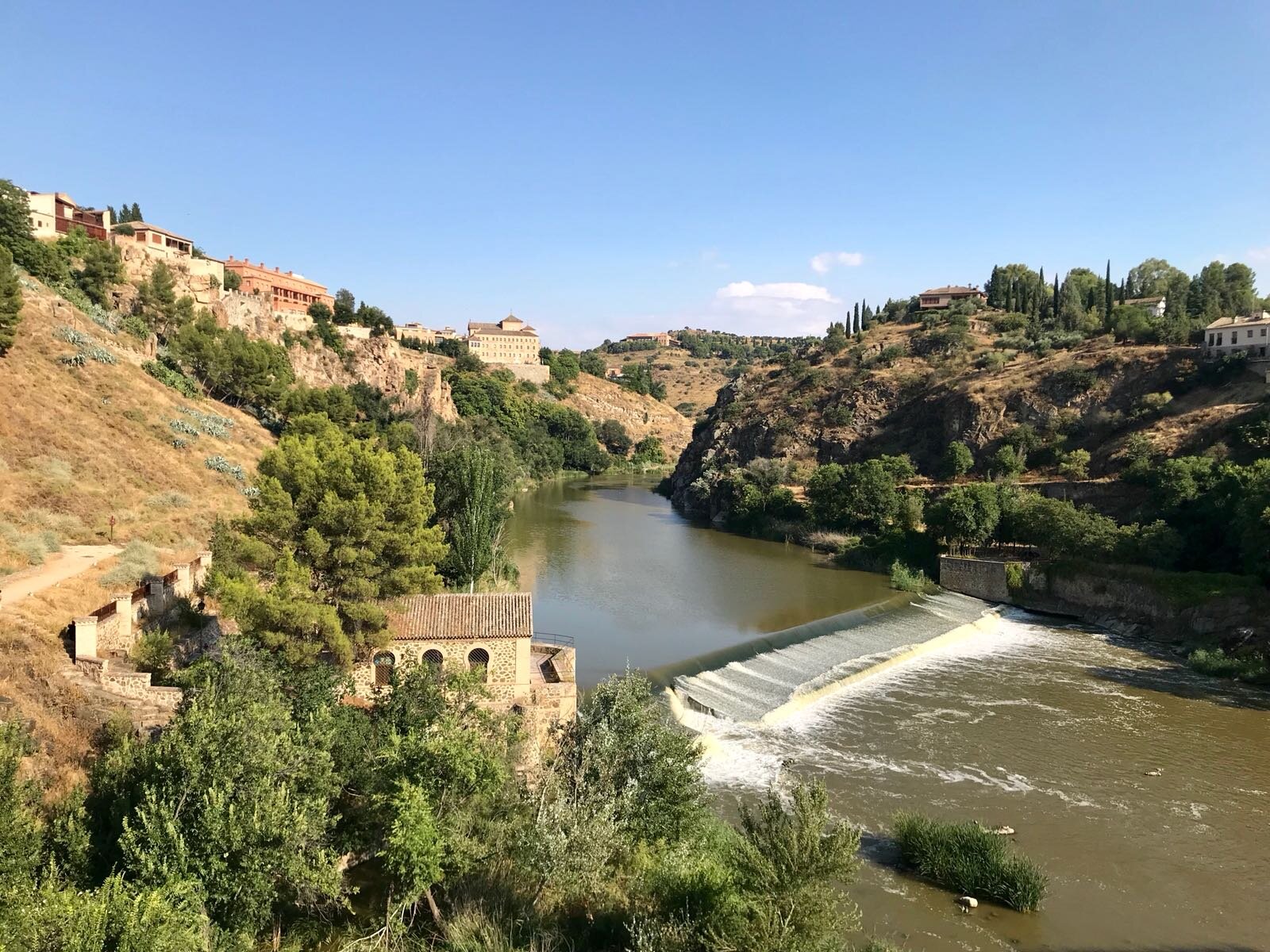
Stop 13: Estación de Toledo
At this point, you are likely exhausted from walking many miles and it is time to head home. From Puente de Alcántara if you are facing the entrance to the old city, turn right and follow the major road, Avenida Castilla la Mancha past the park and the roundabout. The Bus station will be shortly after the roundabout on the left-hand side. If you used your Abono to travel, you can make your way downstairs and hop on the next bus to Madrid. You can also purchase a ticket at the counter if necessary. (I believe it is about 5 euros for a return trip.)
Important things to remember for a Day trip to Toledo
One thing to keep in mind while visiting Toledo is it’s very hilly. When going to Toledo, be prepared to walk a lot. It is truly a beautiful city and I hope this Itinerary helps you see everything you want in the easiest way possible. I know that my first trip to Toledo was very unorganized and lead to me walking up and down way more hills than necessary.
Which is better to visit Toledo or Segovia?
Personally, I love them both. Both cities have so much to offer, but my vote if you are looking to explore the purest version of Spain, is Toledo. There is much more to explore in Toledo!
If you have the time, definitely check out Segovia as well.
Let’s go to Torrevieja, Spain Next!
3 Comments
Comments are closed.